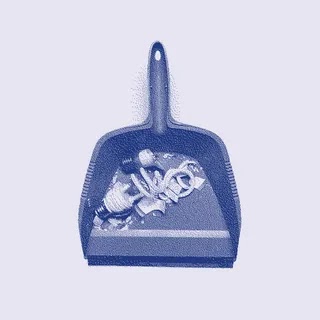The LA duo’s sixth album is notably abstract and eccentric, showcasing a renewed sense of possibility.
No Age’s breakthrough release, Weirdo Rippers, came out 15 years ago, when Billie Eilish was five years old and people could still afford to live in Los Angeles. The compilation of early lo-fi singles shifted guitarist Randy Randall and drummer-singer Dean Spunt into indie rock’s low-watt spotlight; stories tended to focus on their deep involvement in L.A. performance art venue and community space The Smell, a hub for the city’s burgeoning bohemia. The Smell is still kicking. And so are No Age, thankfully, even though their hazy, propulsive, and blissful skate-punk hasn’t changed substantially since 2007.
Between 2008’s universally acclaimed Nouns and 2020’s Goons Be Gone, Randall and Spunt have remained committed to their foundational sound—wielding whirls of guitar effects to smear three- or four-chord punk songs—but tend to differentiate each release through mixing and tweaking. They’ll lower the levels of distortion or accentuate Spunt’s slurred, slacker vocals; they’ll cut out the drums, or anything resembling a song, entirely; they’ll thrash away or chill out. But on People Helping People, No Age’s sixth album, Randall and Spunt break from their template with music that’s more abstract and eccentric. For the first time since their early releases, they’re playing with a renewed sense of possibility.
Of all No Age’s LPs, People Helping People has the most in common with the jagged arrangements of 2013’s An Object. Yet that album was still primarily song-based, whereas People Helping People emphasizes sound and texture. It’s bookended by two ambient pieces, and the first track resembling classic No Age—the squelchy, nervy, and unexpectedly poignant “Plastic (You Want It)”—doesn’t arrive until nearly a third of the way in. Seven of the 13 cuts have no vocals; five have no drums. The most straightforward songs are an unusual hybrid of IDM and post-punk. No Age draw lots of comparisons to Hüsker Dü, but People Helping People is more like Mouse on Mars trying to make The Flowers of Romance.
The kitchen-sink sound design is likely a byproduct of the recording process. People Helping People is the first No Age album created without an outside producer, in their own studio in Randall’s garage. Some songs feel like experiments with new tools. A motorik-paced synth-drum beat is the sole backing on “Compact Flashes,” with clipped guitar scrapes and drum hits entering at random. “Interdependence” is a phased-out passage of psychedelic guitar shredding that wouldn’t sound out of place on a Six Organs of Admittance LP. The ceremonial and downright dreamy “Blueberry Barefoot,” backed by orchestral synth chords, could be a Disintegration demo, a punk church wedding, or hold music for androids.
Spanning just over half an hour, People Helping People requires a few listens before its logic begins to click, but eventually the fractured music overlaps with their catalog, even suggesting new directions for their work to come. No Age’s music always felt like it was equally at home in a gallery or a basement show, but now they seem to be inching further toward the art world. That holds true for Spunt’s lyrics, which are still too cryptic to be sloganeering (“I don’t like the obvious, I made you my man,” he sings on the single “Tripped Out Before Scott”). The video for closing track “Andy Helping Andy,” directed by noted L.A. photographer and experimental filmmaker Kersti Jan Werdal, shares a similar sensibility, with a montage of found footage of Andy Warhol. None of these gestures are pretentious or off-putting. In fact, they’re in line with No Age’s persistent virtue: to inspire and energize through ambiguity and without resorting to cheap sentiment.



0 comments:
Post a Comment